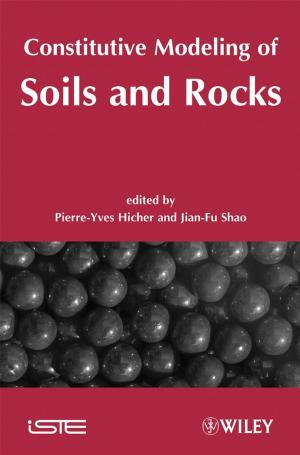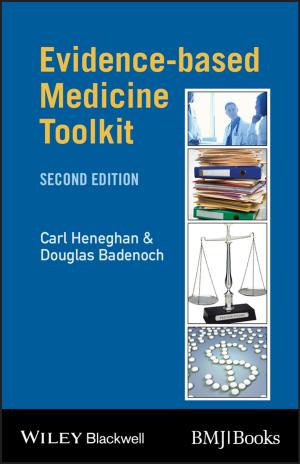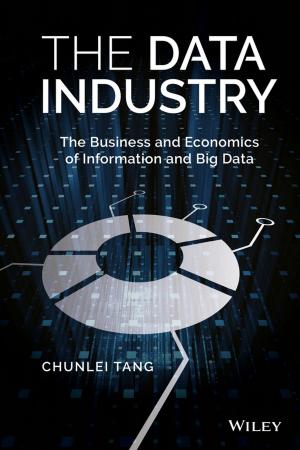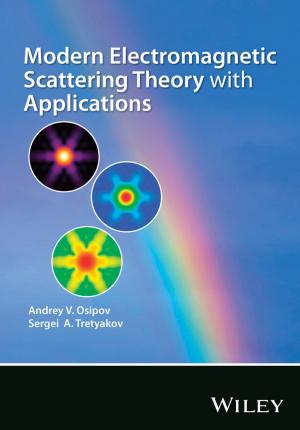Cluster Secondary Ion Mass Spectrometry
Principles and Applications
Nonfiction, Science & Nature, Science, Chemistry, Analytic| Author: | Christine M. Mahoney | ISBN: | 9781118589243 |
| Publisher: | Wiley | Publication: | April 17, 2013 |
| Imprint: | Wiley | Language: | English |
| Author: | Christine M. Mahoney |
| ISBN: | 9781118589243 |
| Publisher: | Wiley |
| Publication: | April 17, 2013 |
| Imprint: | Wiley |
| Language: | English |
Explores the impact of the latest breakthroughs in cluster SIMS technology
Cluster secondary ion mass spectrometry (SIMS) is a high spatial resolution imaging mass spectrometry technique, which can be used to characterize the three-dimensional chemical structure in complex organic and molecular systems. It works by using a cluster ion source to sputter desorb material from a solid sample surface. Prior to the advent of the cluster source, SIMS was severely limited in its ability to characterize soft samples as a result of damage from the atomic source. Molecular samples were essentially destroyed during analysis, limiting the method's sensitivity and precluding compositional depth profiling. The use of new and emerging cluster ion beam technologies has all but eliminated these limitations, enabling researchers to enter into new fields once considered unattainable by the SIMS method.
With contributions from leading mass spectrometry researchers around the world, Cluster Secondary Ion Mass Spectrometry: Principles and Applications describes the latest breakthroughs in instrumentation, and addresses best practices in cluster SIMS analysis. It serves as a compendium of knowledge on organic and polymeric surface and in-depth characterization using cluster ion beams. It covers topics ranging from the fundamentals and theory of cluster SIMS, to the important chemistries behind the success of the technique, as well as the wide-ranging applications of the technology. Examples of subjects covered include:
- Cluster SIMS theory and modeling
- Cluster ion source types and performance expectations
- Cluster ion beams for surface analysis experiments
- Molecular depth profiling and 3-D analysis with cluster ion beams
- Specialty applications ranging from biological samples analysis to semiconductors/metals analysis
- Future challenges and prospects for cluster SIMS
This book is intended to benefit any scientist, ranging from beginning to advanced in level, with plenty of figures to help better understand complex concepts and processes. In addition, each chapter ends with a detailed reference set to the primary literature, facilitating further research into individual topics where desired. Cluster Secondary Ion Mass Spectrometry: Principles and Applications is a must-have read for any researcher in the surface analysis and/or imaging mass spectrometry fields.
Explores the impact of the latest breakthroughs in cluster SIMS technology
Cluster secondary ion mass spectrometry (SIMS) is a high spatial resolution imaging mass spectrometry technique, which can be used to characterize the three-dimensional chemical structure in complex organic and molecular systems. It works by using a cluster ion source to sputter desorb material from a solid sample surface. Prior to the advent of the cluster source, SIMS was severely limited in its ability to characterize soft samples as a result of damage from the atomic source. Molecular samples were essentially destroyed during analysis, limiting the method's sensitivity and precluding compositional depth profiling. The use of new and emerging cluster ion beam technologies has all but eliminated these limitations, enabling researchers to enter into new fields once considered unattainable by the SIMS method.
With contributions from leading mass spectrometry researchers around the world, Cluster Secondary Ion Mass Spectrometry: Principles and Applications describes the latest breakthroughs in instrumentation, and addresses best practices in cluster SIMS analysis. It serves as a compendium of knowledge on organic and polymeric surface and in-depth characterization using cluster ion beams. It covers topics ranging from the fundamentals and theory of cluster SIMS, to the important chemistries behind the success of the technique, as well as the wide-ranging applications of the technology. Examples of subjects covered include:
- Cluster SIMS theory and modeling
- Cluster ion source types and performance expectations
- Cluster ion beams for surface analysis experiments
- Molecular depth profiling and 3-D analysis with cluster ion beams
- Specialty applications ranging from biological samples analysis to semiconductors/metals analysis
- Future challenges and prospects for cluster SIMS
This book is intended to benefit any scientist, ranging from beginning to advanced in level, with plenty of figures to help better understand complex concepts and processes. In addition, each chapter ends with a detailed reference set to the primary literature, facilitating further research into individual topics where desired. Cluster Secondary Ion Mass Spectrometry: Principles and Applications is a must-have read for any researcher in the surface analysis and/or imaging mass spectrometry fields.















